Inkspired Is Back with a Twist of Fun
Pen2Profit's spinoff will bring you outstanding stories for great reading FREE
You know me, I’ve been writing professionally since Moses lost his shoes, and I publish Pen2Profit to empower writers who want to make a living. Welcome to Inkspired, my spinoff publication which will focus purely on entertaining reads.
Twice a week, I’ll tell you a personal story, or one from my guest writers, that will uplift you, make you laugh, make you mad, resonate with your own experiences, share a universal truth, or simply provide a comfortable few minutes to relax and enjoy. That’s it. No axes to grind. No sales to pitch. No lessons to study.
Here’s the first entry.
Shaping Serenity: How Mud, Sweat, and Frustration Transformed My Life
My whole self changed when I put away my pen and immersed myself in clay
Maryan Pelland, Woman with a Pen
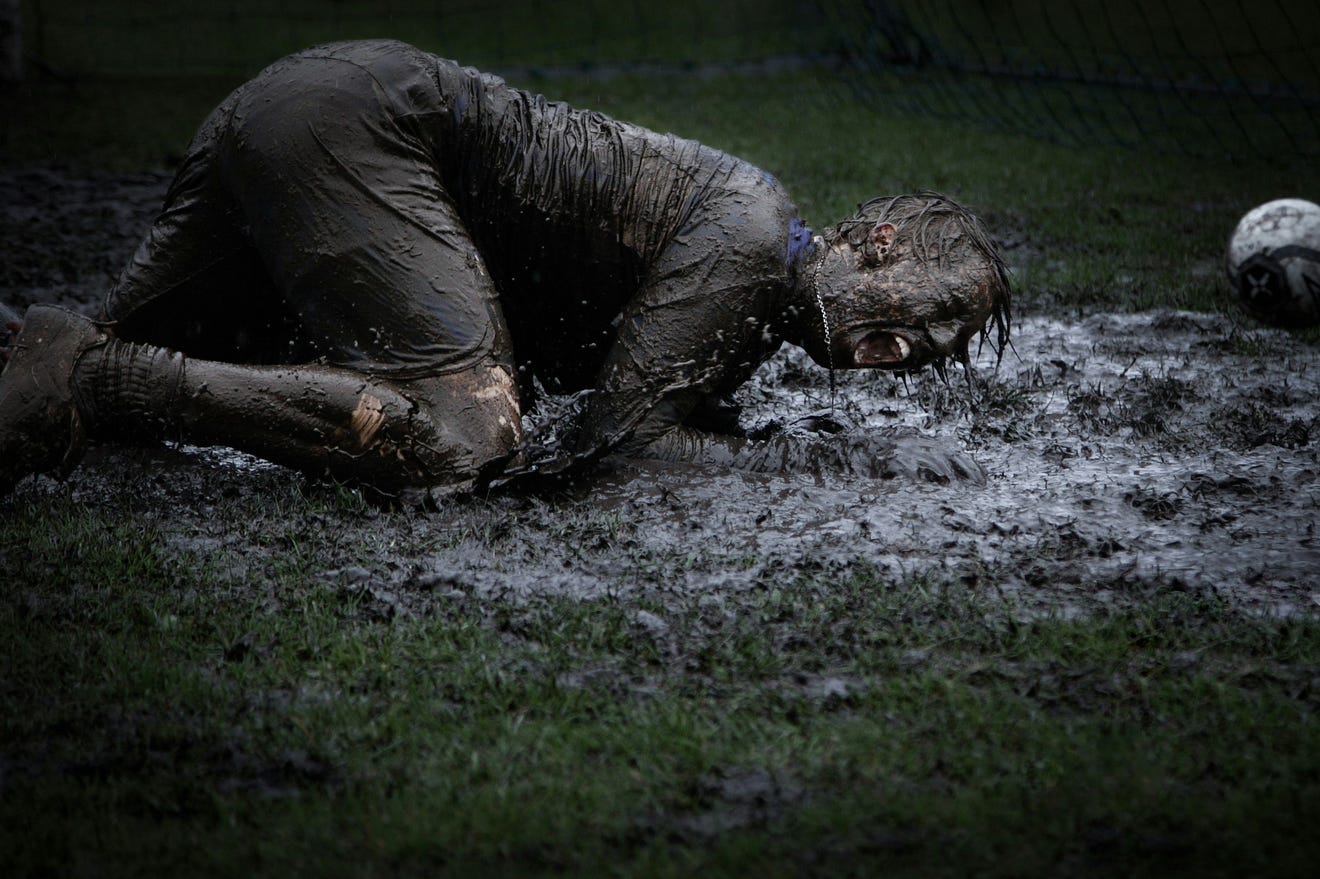
This is a story of kintsugi, the oriental art of reclaiming broken art by respecting the process of mending and healing. It works with people, too.
When I fired a huge, intricate clay sculpture that I had spent weeks refining and perfecting, the kiln gods unsympathetically exploded the jawline and blew off the chin. This was not my fault — they knew that but didn’t give a ratzass. My heart was broken, which also didn’t concern those gods, just like the Universe can be ruthless about hurling thunderbolts into our lives.
Kintsugi is an ancient Japanese remedy for unforeseen circumstances in the making of art. If a precious bowl is broken, an artist may use kintsugi to refine the pieces, set them back together, and, instead of hiding the scars and pretending nothing happened, they use bright gold powder mixed with bonding agents to put the pieces together. The injury and the healing enhance the work and create an even more beautiful, relatable piece of art.
At a point in my life when I encountered a number of happenings that I couldn’t control and couldn’t escape, I needed a major change and a redirection. I put down my writing career — the isolation of working alone wasn’t helping me at all. Floundering a bit, I looked long and hard for something to rescue me, and I found it.
A long-time friend listened as I presented my laundry list of troubles. He was empathetic and kind as he watched me wring my hands. He said, “I just met the clay instructor at the college’s community ceramic studio. You’d like him, and you’re always doing art projects. Let’s go talk to him.”
I said, “Yeah, but…” (don’t you just love yeah buts?) “I’ve never worked with clay — don’t know anything about it.”
Still, we went over to the college anyway, for fun.
Ten days later, I was sitting in the ceramics class, clumsily forming a pinch pot with some slippery mud called stoneware. I felt a little anxious, like a noob trying not to look like one. Tom, the instructor who would become my mentor for the next decade or so, encouraged, joked, demonstrated skills, and lured me in minute by minute.
Tom didn’t just show people how to make pots. He shared a deep love of the ancient art of preserving mud and mixed in his personal philosophy of how working with mud connects us to mindfulness, spurs muscle memory, and develops creativity independent of conscious thought.
Pretty soon, I was in the studio anytime I could steal a half hour away from my writing jobs or the concerns and stresses in my life. It wasn’t long before I could let my hands do the clay work independently while my mind felt clear and unfettered. Hours slipped by without my being aware of the passage of time. It became my meditation, my focus, and my solace.
For me, there were, over the years, as many failures as successes. My fellow mudders and I often laughed long and hard at some of our missteps and took extreme pleasure in our successful work. Clay art is fraught with happy accidents that produce beautiful work to surprise even the artist. You learn to roll with it.
In those years of playing and experimenting with mud, one of the oldest arts in the history of mankind, I learned to let go of things that didn’t serve me. I learned that worry is a worthless pursuit. I learned that outside aggravations churned on without me while I was safe and oblivious in the studio.
Concepts like kintsugi made sense to me. Another ancient idea, wabi sabi focuses on finding beauty in imperfection and accepting the temporary nature of all things. Wabi sabi is an unrushed and basic view of the Universe filled with authenticity and naturalness of growth, decay, and death.
That aesthetic philosophy leads us to recognize power and beauty in things we might otherwise be tempted to judge as unattractive. Once we embrace those things, we can reframe challenges so we experience their value instead of finding fault or pain.
To weather challenges in clay work and in life, it’s necessary to dig deep and find our sense of resilience and power. Kintsugi underlines the impermanence of everything in life — the only constant is change. My carefully constructed clay head sculpture had succumbed to a random event, the same way that fragility, setbacks, and unpredictability have sometimes colored my life.
The injuries we sustain and the choices we make
I have moved through the death of a child, combat injuries to two of my children, the loss of a dear brother to suicide, and, like many of you, an assortment of hurdles in my path. As humans, we can choose to be steamrolled by adversity. Many people do. We can also choose resilience.
When I have chosen to be flattened, my energy is depleted. I feel dark, lost, maybe hopeless.
I say things like, “Why me?” and drag myself through the mire with sadness in my heart and a sense of injustice. I admit it. I wallow. I am aware that I am making a choice to feel my pain and allow my psychic and spiritual injuries to ripen. Sometimes, it’s very helpful to rend my garments, rub my face with ashes, and chew bitter herbs — I kind of get into it. That was my choice when my brother died.
And that’s fine, for a time.
His suicide at age 33 was immediate and shocking. Unpredictable. My wallowing gave me an opportunity to grow into the loss and face the life-change. But at a point, I found myself laughing out loud at something goofy and endearing Bill had said in his life, and I recognized a need to rebound or to get stuck.
So I made a new choice. Kintsugi. I mended me, making sure I didn’t hide the broken part, but I let the joy that was my brother make the pain acceptable.
When performing a kinsugi mend, we mix gold or platinum powder with urushi lacquer to form a strong, beautiful, visible glue. Here are some things that helped formulate the glue for my psychic healing.
Energy — renewing and sustaining my desire to forge onward and move forward.
Visualizing a bright future
Inner power — focusing on my strengths and the positives in my life
Flexibility — allowing myself to experience all of my emotions, both positive and negative, while not allowing them to take over.
Strong relationships and wholesome activities. Almost everything is easier with a support network. I ask for help when I need it and manage my feelings by keeping engaged with good people and healthy endeavors.
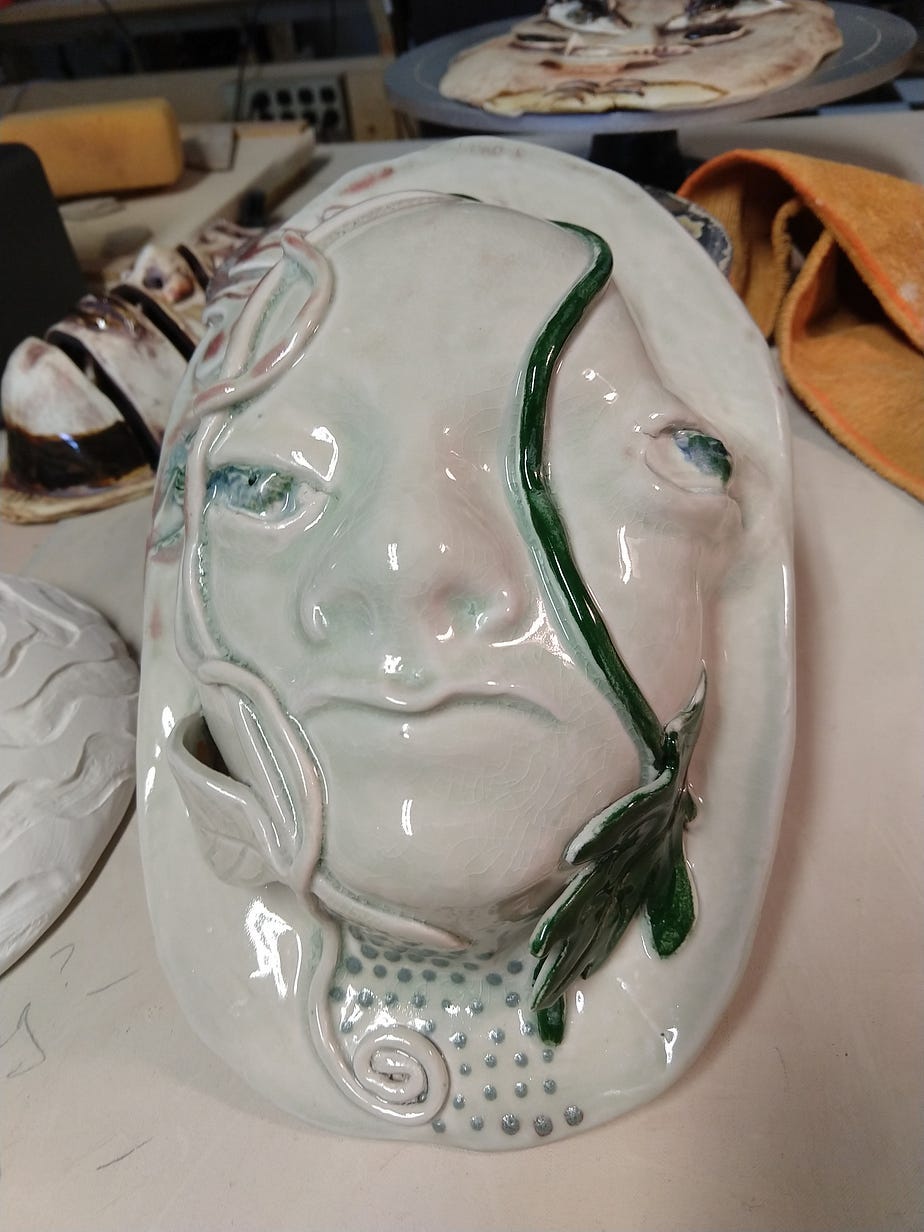
The rest of the story
I don’t work in clay much anymore — my hands are old and the work is challenging — so I’ve turned my whole focus back to writing and communicating.
I’m well aware that I will never master all of life’s mysteries, and I will not likely become enlightened in this lifetime. But I am ever grateful for the chain of events that led me to try something way outside my wheelhouse and wallow in earthy mud instead of in earthly pain.
Bottom line — take a risk and break out of your envelope — you never know how much you will gain and learn from adopting a resilient way of moving forward. May you be well and creative.
Footnote: All the ceramic pieces are handbuilt and finished by me. I have about 200 completed pots, some functional like cups, pitchers, and bowls, some are strictly about form, like the sculptures. I often referenced prehistoric pots, especially in the style of ancient pots of the Jomon period found in caves in China, decorated with rope impressions.



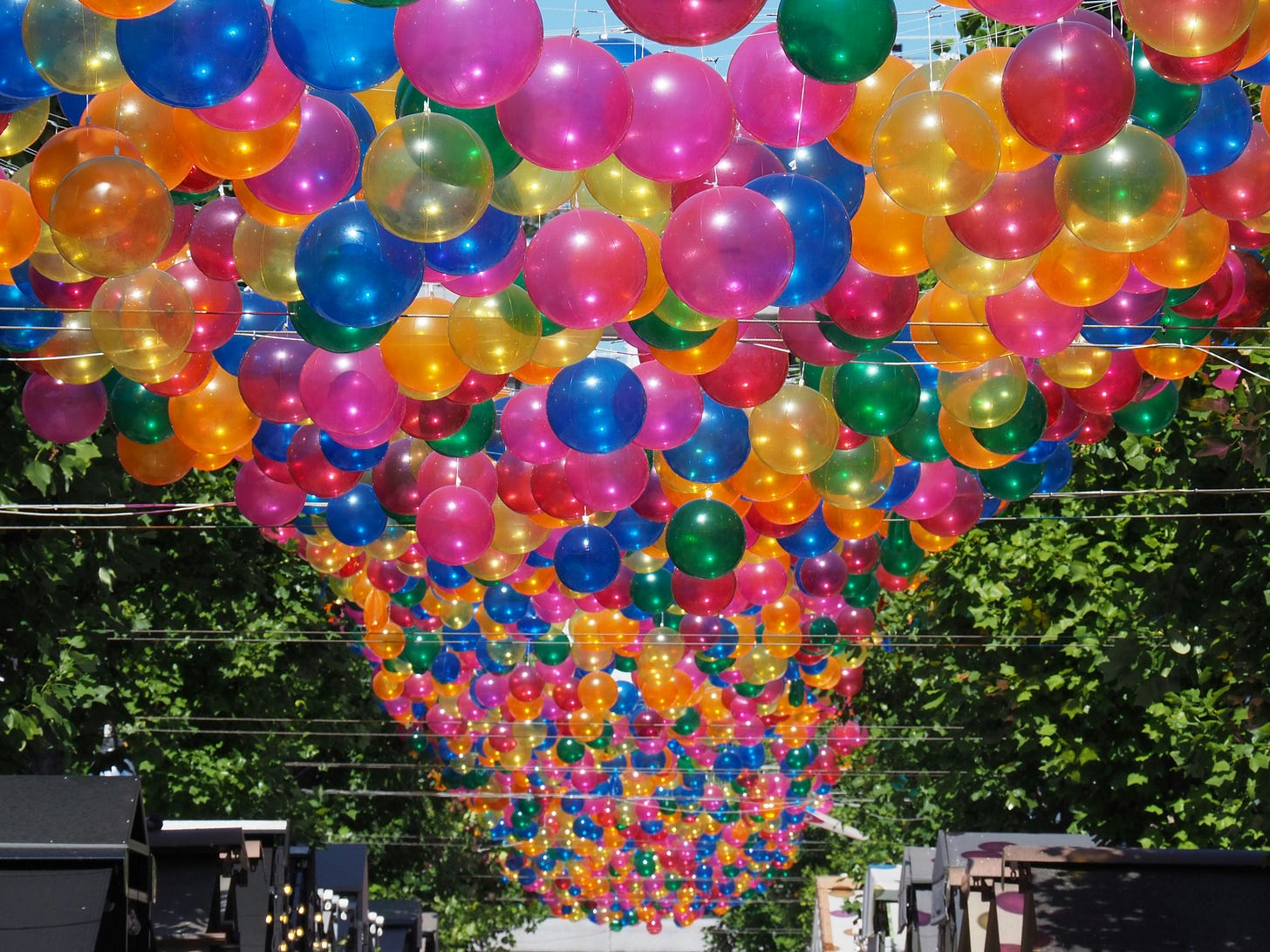

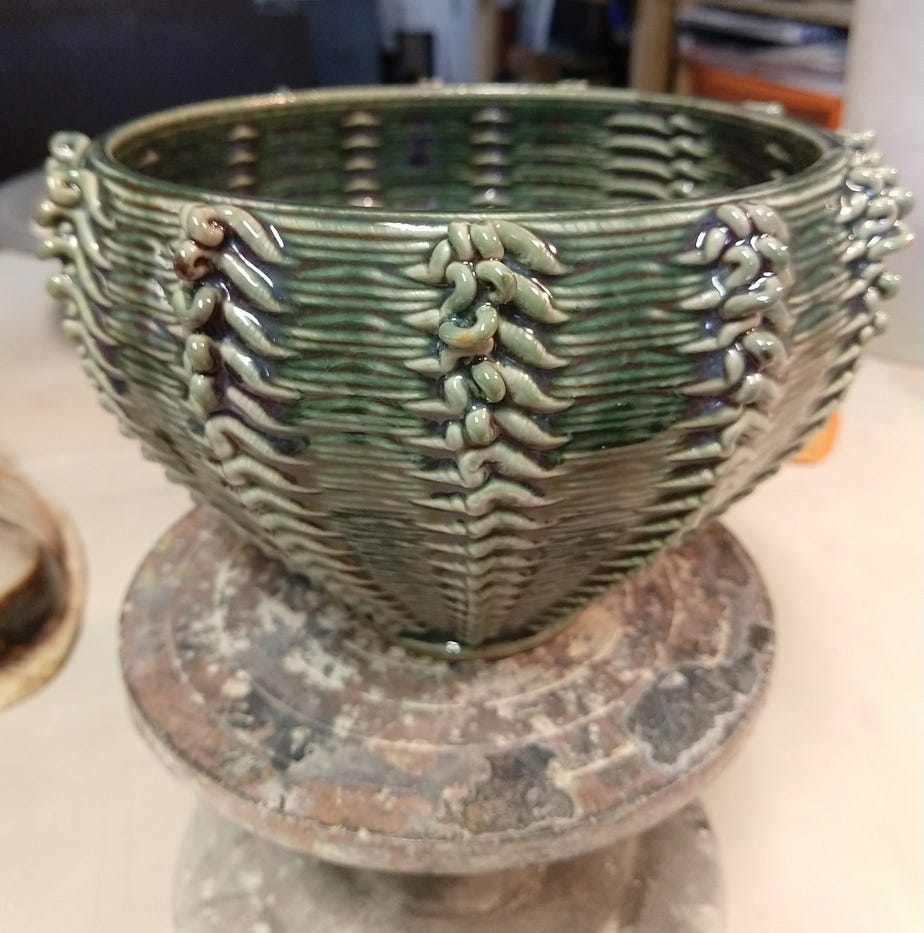
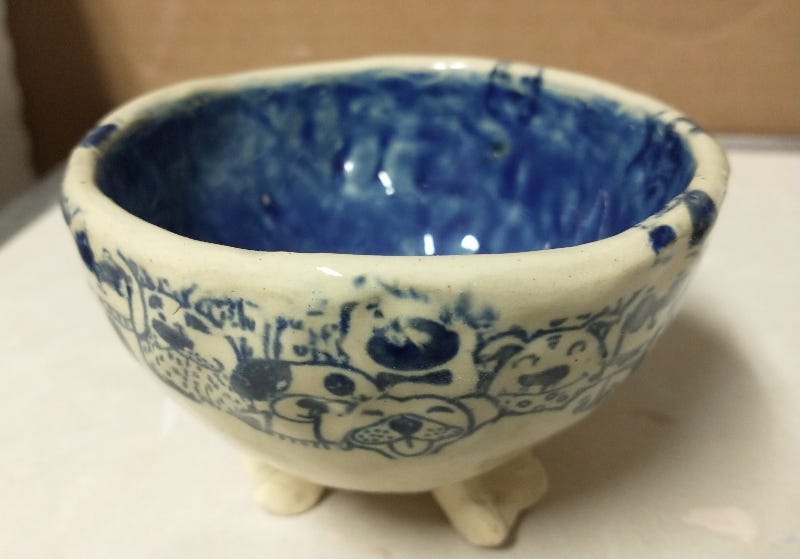
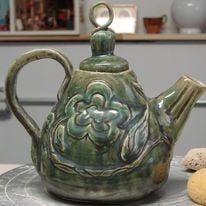
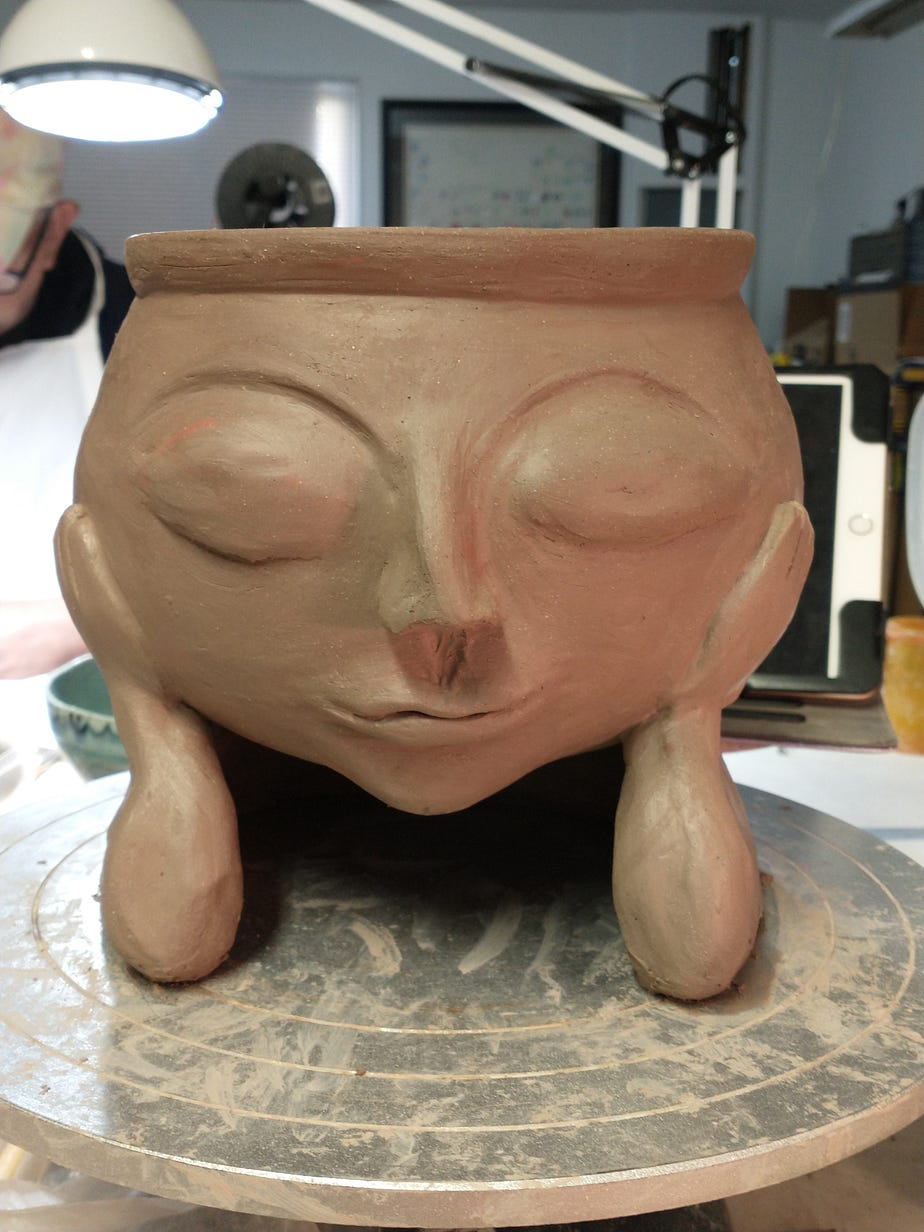

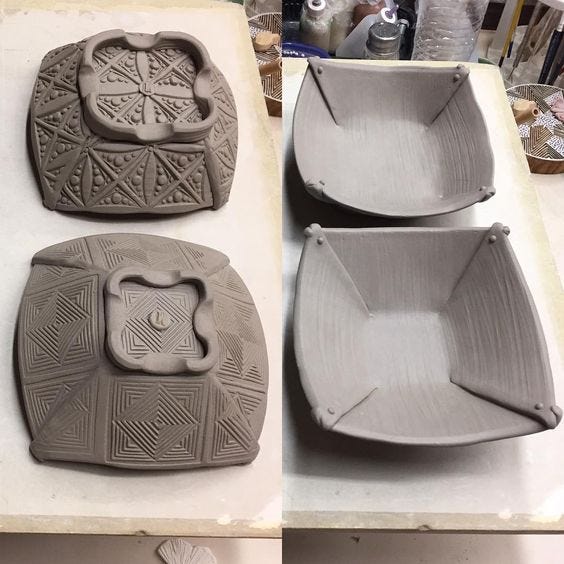
Amazing work! Equally talented in words and clay. Now, there's a feat! I took pottery classes too, at one point. Flung clay around and felt completely frustrated by it. The instructor kept saying, "You must LOVE your clay!" To which, I'd laugh, "I don't even like mine!" Needless to say, clay was not my alternative escape hatch. But, following your path, I am going to try visual art next week, being tired of trying to make things work with words.
Such an interesting (pottery) and self-disclosing (personal life) read. I know you much better now.